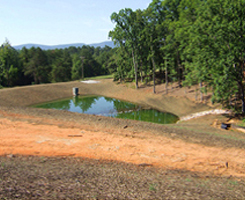South Carolina - Monastery of St. Clare Case Study
National Information
Region 4 Toolkits
Historic Preservation and Green Building
Green Building Standards, Certifications, Model Codes and Ordinances
- American Society of Heating, Refrigerating and Air-Conditioning Engineers (ASHRAE 90.1)

- Green Advantage-credential program for construction personnel

- Green Footstep - Rocky Mt. Institute

- Green Globe for Buildings

- Green Seal

- International Green Construction Code

- US Green Building Council-Leadership in Energy and Environmental Design

Professional and Trade Associations
Sustainable Design and Green Building Guides and Products
- CDC Tips for a Green Home
- DSIRE: Database of state incentives for renewables and efficiency

- EPA Green Power Locator
- Forest Stewardship Council

- Green2Green - compare green building products

- International Living Future Institute

- National Resources Defense Council - Building Green

- Savannah College of Art and Design Emergent Structures Initiatives

- Sustainable Facilities Tool

- Sustainable Sites Initiative

- Whole Building Design Guide

Contact Information
Pollution Prevention and Innovation Team
U.S. EPA Region 4
r4sustainability@epa.gov
Background
The sisters of St. Clare in Travelers Rest, South Carolina made environmental stewardship a priority in the construction of their new monastery. Built in 207, the monastery incorporated many green building techniques and attained LEED Silver certification.
Project Approach and Process
The monastery’s contractors utilized a Construction Activity Pollution Prevention Plan throughout the building process that allowed for pollution reduction from construction activities by controlling soil erosion, waterway sedimentation and airborne dust generation.
The Monastery was built on a previously developed site that was 75% restored through the use of native or adaptive plants and maintains 94% open vegetated space. Efforts to reduce and contain runoff included:
- a stormwater management facility,
- water quality basin, and
- installation of vegetative filter strips.
Water is further conserved by minimizing irrigation systems and using high-efficiency plumbing fixtures indoors.
Energy consumption is reduced through the use of green power, thick insulation, and waste heat recovery. The Monastery’s construction utilized both recycled and local materials in order to minimize environmental impact as well.
Indoor air quality was maintained through the use of a mechanical ventilation system, environmental tobacco smoke control, and low or no-VOC content products. Many green efforts are made by the monastery nuns daily, such as encouraging alternative transportation and minimizing electrical light usage. Residents have access to hybrid vehicles, bicycle racks are provided, and a mixed use parking area minimizes environmental impact while encouraging carpooling.
Process

The building design ensured that this 300-year-old Oak tree was conserved

This retention pond was created to reduce and contain storm water runoff.
Benefits |
| The new LEED Silver certified Monastery has many environmental benefits that range from small to large in scale. In addition to helping conserve natural resources, the health of the nuns is also bettered from the green building. The nuns benefit in particular from increased indoor air quality, which is one of the main categories of LEED certification. |
Contact Info
Mary Pat CrozierMaryPatC@charter.net
![[logo] US EPA](../gif/logo_epaseal.gif)